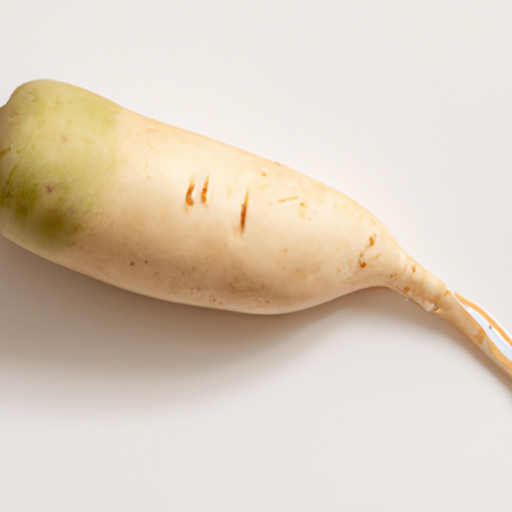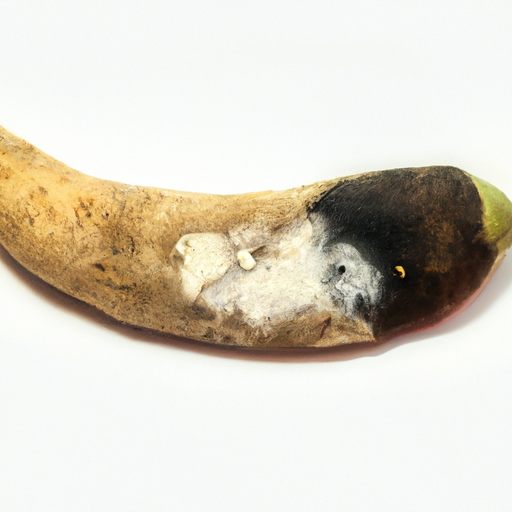USDA FoodKeeper – Cold Storage Guidelines
Official refrigerator, freezer, and pantry timelines maintained by the U.S. Department of Agriculture.
Visit USDA FoodKeeperWith its crisp texture and subtly sweet flavor, daikon radish adds a delightful crunch to salads and stir-fries. To enjoy this versatile veggie at its best, store it in a cool pantry and use it within 14 days—once past that mark, it’s best to toss it for optimal safety.
Get our 16-page guide with exact timelines for 70+ foods. Save €1,500+/year by knowing what's actually safe to eat.


Pantry
50-55°F (10-13°C)
Loosely wrapped in a paper towel in a perforated plastic bag
14 days
Wrinkled or soft texture, mold growth
Pickling, soups, salads, stir-fries
Turnip or jicama
Sure thing! Expiration dates and best quality dates for daikon radish can be a bit confusing but don't worry, I've got you covered! Expiration dates are more about safety. It's the date recommended by the manufacturer to consume the daikon radish by for it to be at its best in terms of quality. Eating it after this date might not be safe due to potential bacteria growth. Best quality dates, on the other hand, refer to the period when the daikon radish will be freshest, tastiest, and most nutritious. After this date, the quality might decline, but it doesn't necessarily mean it's unsafe to eat. For example, if the expiration date on your daikon radish is approaching, but it still looks fresh and firm, it's probably fine to eat. However, if it's past the best quality date and starting to show signs of wilting or mold, it's best to toss it. Personally, I tend to rely more on the look and feel of the daikon radish rather than just the dates. If it still looks good, smells fresh, and isn't slimy or moldy, I'd feel comfortable using it a little past the best quality date.
To determine if Daikon Radish has gone bad, look for any signs of mold, discoloration, or sliminess on the surface. A foul smell or a sour odor indicates spoilage. Additionally, a soft or mushy texture means the Daikon Radish is no longer fresh and should be discarded.
Hey there! Let's chat a bit about Daikon Radish and food safety. While Daikon Radish is delicious and packed with nutrients, there are some foodborne illness risks to be aware of. One major risk is contamination from harmful bacteria like E. coli or Salmonella, especially if the radish wasn't handled or stored properly. Symptoms of foodborne illness can range from stomach cramps, nausea, vomiting, to even more serious issues like fever and diarrhea. To keep things safe, make sure to wash your Daikon Radish thoroughly before using it. You can use a vegetable brush to scrub the skin or peel it if you prefer. It's also important to store Daikon Radish in the fridge to prevent bacterial growth. I always like to share my personal tip of storing Daikon Radish in a perforated plastic bag in the crisper drawer of the fridge. This helps maintain freshness while reducing the risk of contamination. Stay safe and enjoy your delicious Daikon Radish dishes!
Hey there! Let's talk Daikon Radish storage hacks! 1. **Keep it fresh:** Store Daikon Radish unwashed in a perforated plastic bag in the vegetable drawer of your fridge. The perforations allow for air circulation, keeping it fresh longer. 2. **Extend its life:** If you want to extend its shelf life, you can peel and cut Daikon Radish into sticks or slices. Store them in a container filled with water in the fridge. Change the water every 2 days to keep it crisp. 3. **Get creative:** Don't limit yourself to traditional storage methods. You can pickle Daikon Radish with vinegar, salt, and sugar to add flavor and preserve it for a longer time. 4. **Personal tip:** I love grating Daikon Radish and freezing it in portion sizes for quick additions to soups, stews, or stir-fries. It retains its texture well when frozen. 5. **Professional tip:** When selecting Daikon Radish, choose ones that are firm, heavy for their size, and have smooth skin. Avoid any with soft spots or blemishes for the best quality storage. Hope these tips help you make the most of your Daikon Radish! Enjoy experimenting with different storage methods!
Hey there! Let's chat about daikon radish – a true culinary gem! Did you know that this long, white root vegetable has been a staple in Asian cuisine for centuries? Its mild flavor and crunchy texture make it a versatile ingredient in dishes like stir-fries, salads, and pickles. In Japanese culture, daikon radish symbolizes good luck and is commonly eaten during New Year's celebrations as it represents longevity and prosperity. It's also believed to aid digestion and promote overall health. Fun fact: Daikon radish can grow up to 2 feet long and weigh several pounds! That's one impressive veggie, right? Apart from its cultural significance, daikon radish is packed with nutrients like vitamin C, fiber, and antioxidants, making it a healthy addition to your diet. So next time you're at the market, grab a daikon radish and get creative in the kitchen – your taste buds will thank you!
If Daikon Radish has been stored at room temperature for a day, it's best to discard it. Bacteria multiply rapidly at room temperature, increasing the risk of foodborne illness. To ensure food safety, refrigerate Daikon Radish promptly after purchase or preparation.
Once opened, Daikon Radish can be stored in the refrigerator for up to 5-7 days. To maintain freshness and prevent spoilage, store it in an airtight container or resealable bag. Check for any signs of mold, off-odors, or sliminess before consuming.
Freezing Daikon Radish may cause changes in texture upon thawing, resulting in a softer or mushier consistency. To minimize texture alterations, blanch Daikon Radish before freezing. Use frozen Daikon Radish within 6-8 months for the best quality.
While the shelf life of Daikon Radish is generally around 14 days when stored properly, variations may exist between different brands due to factors like processing methods and packaging. Always check the expiration date on the package and follow storage instructions for optimal freshness.
Cooking Daikon Radish can extend its shelf life by slowing down bacterial growth and enzymatic activity. Once cooked, store Daikon Radish in the refrigerator and consume it within 3-4 days. Properly cooked Daikon Radish should be stored in airtight containers to maintain quality.
Daikon Radish tends to last longer in cool environments, such as during the winter season. Higher temperatures in summer can accelerate spoilage, shortening its shelf life. To prolong the freshness of Daikon Radish in warmer months, store it in the refrigerator and use it within the recommended time frame.
When transporting Daikon Radish for a few hours, use a cooler bag with ice packs to maintain a cold temperature. Avoid exposing Daikon Radish to direct sunlight or high temperatures during transit. Once at your destination, promptly refrigerate Daikon Radish to preserve its quality and safety.
Stop guessing about expiration dates. Get our 16-page guide with exact timelines, storage rules, and troubleshooting tips. Save €1,500+/year.
Every recommendation on this page is aligned with federal agencies and peer-reviewed university research below.
Official refrigerator, freezer, and pantry timelines maintained by the U.S. Department of Agriculture.
Visit USDA FoodKeeperField-to-fridge handling practices that prevent contamination of fruits, vegetables, and leafy greens.
Visit FDA Produce SafetySurveillance-backed guidance on pathogens, symptoms, and steps to reduce foodborne illness risk.
Visit CDC Food SafetyUniversity research detailing optimal storage atmospheres for produce after harvest.
Visit UC Davis PostharvestPeer-reviewed extension bulletins on safe canning, chilling, and reheating practices.
Visit Penn State ExtensionNeed deeper reading? Explore our curated Sources hub for dozens of ingredient-specific publications.
Scan your food directly and get instant safety info using our AI-powered camera feature.
Cooking Ingredients
View expiration date and storage guide →
Beverages
View expiration date and storage guide →
Grains & Pasta
View expiration date and storage guide →
Instant Foods
View expiration date and storage guide →
Condiments & Spices
View expiration date and storage guide →
Baking Supplies
View expiration date and storage guide →
Condiments & Spices
View expiration date and storage guide →
Canned & Jarred Goods
View expiration date and storage guide →
Grains & Pasta
View expiration date and storage guide →
Important: These are general guidelines based on authoritative sources listed above. Always use your best judgment and when in doubt, throw it out. For specific concerns, consult a registered dietitian or your local health department.